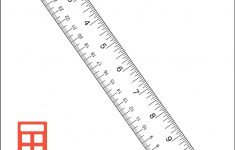


As you slide it, the other two indent markers move as well. Here, I’m moving the Left Indent half an inch in from the left margin.ĭragging the First Line Indent marker changes indentation for only the first line of a paragraph.ĭragging the Hanging Indent marker changes the indentation of all lines except the first line. And if you want to change indents throughout the whole document, just hit Ctrl+A (to select everything), and then adjust the sliders.ĭragging the Left Indent marker changes the indentation for all lines of a paragraph. If you want to change multiple paragraphs, select the paragraphs you want to change. Just position your cursor in the paragraph you want to adjust and slide them around. They control the indenting of individual paragraphs. Those little triangle- and box-shaped markers on the ruler are quite handy. You’ll see the pointer turn to a double arrow and will likely see a tooltip letting you know you’re point at the margin. Now, just click and drag that line left or right to adjust that margin. Hold your mouse over the line separating the white and gray area. You can also quickly adjust margins right from the ruler. Be aware, though, that this settings controls the units of measurement used throughout Word-not just the ruler. You can change measurements to centimeters, millimeters, points, or picas. Note: Word’s rulers show whatever measurement you have set in File > Options > Advanced > Show Measurements In Units Of. Ditto for the vertical ruler: starts at one for a one-inch margin, restarts at zero at the white space, and only goes up to ten. In Word’s default 8.5 by 11-inch page setup, the horizontal ruler starts at 1 (indicating a one-inch margin), then resets at zero where the margin ends, then counts up to 7.5 for the remaining horizontal space. You can see this in the image below, where I’ve set the margin to two inches. When it reaches the white, active area, it starts counting up again. It actually starts on the far left (or top for the vertical ruler) with a number indicating the size of your margin and then counts down. The scaling of the rulers seems a little strange at first. The gray areas at either end of the ruler represent your margin the white areas the active page. Margins are indicated on the ruler by the gray and white areas. If you’re planning on printing via a standard home printer or you’re using the primary tray in your office printer, leave this as is. You can see the result of this setting in the digital rulers on the page, with the default 1-inch margins resulting in a 7.5-inch horizontal ruler and a 10-inch vertical ruler. The default is 8.5 inches by 11 inches, the standard “Letter” size for US paper printing (215.9 x 279.4mm). If you’re printing your document, the “Paper” tab lets you can change the physical size of the paper to match different paper sizes in your printer. You can also use this tab to control page orientation.

The Gutter is extra space on the page, usually used as an extra blank space for things like comb binding (those little plastic corkscrews that make a cheap notebook). The “Margins” tab lets you set the margins for the top, bottom, left, and right, which you can verify with the markers on the ruler (see below). The “Page Setup” window shows you most of the physical layout properties of the document. This is the same window you can open from the Layout tab on the Ribbon. Access the Page Setup Windowĭouble-click any empty space on the ruler to open the Page Setup window. Note: The horizontal ruler is also visible in Web Layout and Draft view.


 0 kommentar(er)
0 kommentar(er)
